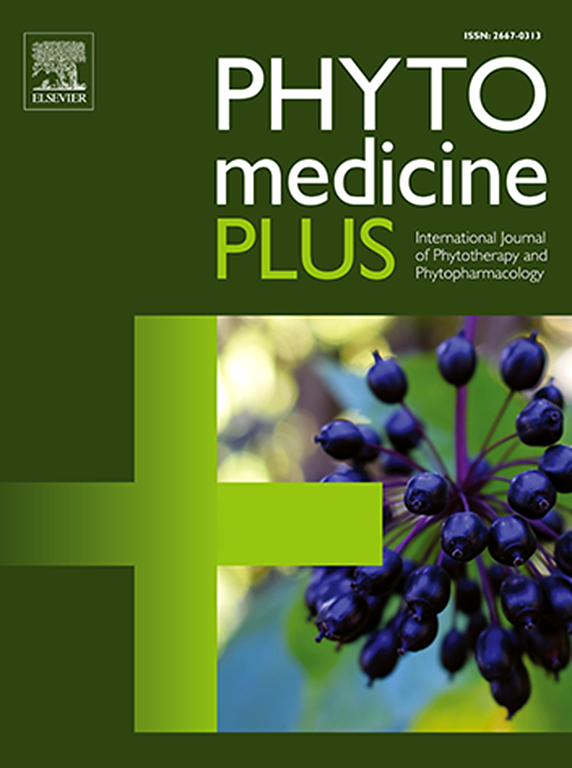Evaluation of the acute and subacute toxicity of Lepidium sativum L. seed extract on Wistar rats
Q3 Pharmacology, Toxicology and Pharmaceutics
引用次数: 0
Abstract
Introduction
Lepidium sativum L., commonly known as garden cress, is a well-known medicinal plant used in many low- and middle-income communities for their primary healthcare. In Ethiopia, L. sativum seed is traditionally used to address various health issues; however, its safety profile has not yet been thoroughly investigated. Therefore, this study aimed to evaluate the acute and subacute toxicity of Lepidium sativum seed extract in Wistar rats.
Methods
An acute toxicity study was conducted in female Wistar albino rats that were administered in a single oral dose and followed for 14 days. Sub-acute oral toxicity study was conducted in rats of both sexes using a 28-day oral toxicity study model. Observations of the animals were performed regularly during the study period, and body weight was measured weekly. Finally, organ weight and histopathology, hematology, and clinical chemistry data were collected on the 29th day. One-way analysis of variance (ANOVA) was conducted, and the results are presented as mean ± standard deviation. Significance was declared at p < 0.05.
Results
Rats treated with 500 mg/kg and 1000 mg/kg of L. sativum seed extract showed significant signs of toxicity, such as diarrhea, decreased movement, and piloerection. The extract caused significant hepatic enlargement in both sexes in the 1000 mg/kg extract-treated groups. Elevation of liver enzymes with associated histopathological derangements of the liver was observed in both sexes in the 1000 mg/kg treatment groups.
Conclusion
The acute toxicity study of 70 % ethanol extract of L. sativum seeds did not result in mortality among rats at the administered doses. Therefore, the LD50 value of the extract was estimated to exceed 5000 mg/kg, categorizing it as practically non-toxic (GHS Category 5). However, the subacute toxicity study revealed detrimental effects on liver histopathology, clinical chemistry, and hematologic parameters at the 500 mg/kg and 1000 mg/kg doses tested.
枸杞子提取物对Wistar大鼠急性和亚急性毒性的评价
lepidium sativum L.,俗称园衣,是一种众所周知的药用植物,用于许多低收入和中等收入社区的初级保健。在埃塞俄比亚,L. sativum种子传统上用于解决各种健康问题;然而,它的安全性还没有得到彻底的调查。因此,本研究旨在评价枸杞种子提取物对Wistar大鼠的急性和亚急性毒性。方法对雌性Wistar白化大鼠进行单次口服给药的急性毒性研究,随访14 d。采用28 d口服毒性研究模型,对两性大鼠进行亚急性口服毒性研究。研究期间定期对动物进行观察,每周测量体重。最后于第29天收集脏器重量及组织病理学、血液学、临床化学数据。采用单因素方差分析(ANOVA),结果以均数±标准差表示。p <;0.05.结果枸杞种子提取物500mg /kg和1000mg /kg对大鼠均有明显的毒性作用,如腹泻、运动减少、勃起等。在1000 mg/kg提取物处理组,两性肝脏均显著增大。在1000 mg/kg治疗组中,两性均观察到肝酶升高并伴有肝脏组织病理学紊乱。结论枸杞子70%乙醇提取物在急性毒性实验中未引起大鼠死亡。因此,估计该提取物的LD50值超过5000 mg/kg,归类为实际上无毒(GHS第5类)。然而,亚急性毒性研究显示,500mg /kg和1000mg /kg剂量对肝脏组织病理学、临床化学和血液学参数有不利影响。
本文章由计算机程序翻译,如有差异,请以英文原文为准。
求助全文
约1分钟内获得全文
求助全文
来源期刊

Phytomedicine Plus
Medicine-Complementary and Alternative Medicine
CiteScore
3.70
自引率
0.00%
发文量
178
审稿时长
81 days
期刊介绍:
 求助内容:
求助内容: 应助结果提醒方式:
应助结果提醒方式:


